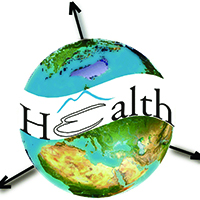The Labin Region, an ecologically vulnerable geographical area in Croatia: Mortality characteristics in an area polluted by industrial over a 40-year period

Accepted: 28 March 2022
HTML: 58
All claims expressed in this article are solely those of the authors and do not necessarily represent those of their affiliated organizations, or those of the publisher, the editors and the reviewers. Any product that may be evaluated in this article or claim that may be made by its manufacturer is not guaranteed or endorsed by the publisher.
Authors
The history of the Labin region in Croatia includes intensive industrial development with repercussions of pollution on environment and health. Assuming that prolonged exposure to polluted environments causes qualitative changes in mortality, the aim was to analyse the mortality characteristics of the population of the Labin Region for the 1968-2008 period based on data from the Croatian Bureau of Statistics. Public health and social opportunities in this geographical area carry a long-term burden of exposure to an industrial polluted environment with outcomes expressed by mortality or/and morbidity in the population. This study includes data on 11,903 deaths, most of which due to diseases of the circulatory, respiratory and digestive systems as well as neoplasms. In the third and fourth decade of the study period, a group of neoplasms showed significant increases, while the increase in respiratory diseases were more gradual. The female population died mostly from diseases of the circulatory and endocrine system as well as neoplasms, while the male population mainly died from diseases of the digestive system and external causes. This research provides guidelines that could create better public health, raising the quality of life and contribute to a future environmental protection in local communities by targeted policies.
How to Cite

This work is licensed under a Creative Commons Attribution-NonCommercial 4.0 International License.
PAGEPress has chosen to apply the Creative Commons Attribution NonCommercial 4.0 International License (CC BY-NC 4.0) to all manuscripts to be published.

 https://doi.org/10.4081/gh.2022.1082
https://doi.org/10.4081/gh.2022.1082




